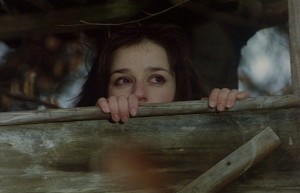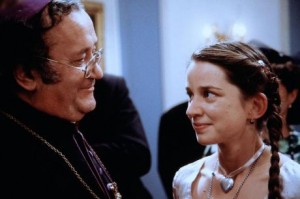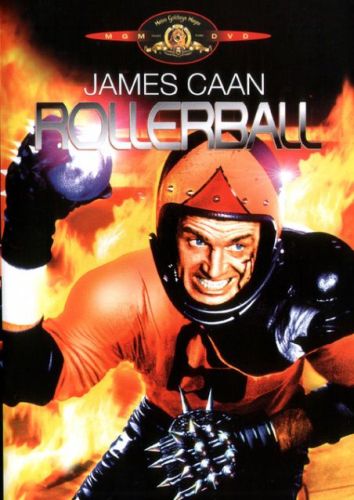From the Chicago Reader (March 15, 1991). — J.R.

THE NASTY GIRL
** (Worth seeing)
Directed and written by Michael Verhoeven
With Lena Stolze, Monika Baumgartner, Michael Gahr, Fred Stillkrauth, Elisabeth Bertram, Robert Giggenbach, and Hans-Richard Muller.

We’re told at the outset of Michael Verhoeven’s The Nasty Girl that Anja Rosmus inspired this film. What we aren’t told is who Rosmus is or how closely this film is based on what happened to her in the 1980s.
Born in 1960 and raised in the Bavarian city of Passau — where Adolf Hitler spent part of his childhood and where Adolf Eichmann was later married — Anja Elisabeth Rosmus, the daughter of two schoolteachers, had a comfortable, middle-class, Catholic upbringing. When she was 20, she won first prize in a national essay contest, writing about privacy and public freedom in European politics and history. The following year she entered another national essay contest, this time settling on a local topic: “An Example of Resistance and Persecution: Passau, 1933-1939.” Having been brought up to believe that her hometown was a bastion of resistance against the Nazis, largely through the efforts of the local Catholic church, she thought she was undertaking a project that would enhance local pride and was surprised by the defensiveness and hostility she encountered from certain quarters outside the church. Read more
From the Chicago Reader (May 18, 2001). — J.R.
The King Is Alive
*
Directed by Kristian Levring
Written by Levring and Anders Thomas Jensen
With Miles Anderson, Romane Bohringer, David Bradley, David Calder, Bruce Davison, Brion James, Peter Kubheka, Vusi Kunene, Jennifer Jason Leigh, Janet McTeer, Chris Walker, and Lia Williams.

The King Is Alive, directed and cowritten by Kristian Levring, is the fourth film to have the dubious honor of qualifying for certification under the rules of the Dogma 95 manifesto, whose professed aim is to get back to the basics of realism — shooting, for example, in natural locations with handheld cameras, direct sound, and natural lighting. But what’s basic or realistic and what isn’t, in terms of film history and technique? The manifesto also insists that movies be shot in color, a rather ahistorical reading of what’s basic — unless one labels all possible uses of color in film realistic and all possible uses of black and white artificial.
If that’s the operative assumption, The King Is Alive triumphantly refutes it. The movie was shot with three digital video cameras — unlike Thomas Vinterberg’s Dogma film The Celebration, which was shot with only one, and Lars von Trier’s Dancer in the Dark (not a Dogma film, but made by one of Dogma’s founders), which was shot with a hundred — and that might make it seem new as well as passé. Read more
From Monthly Film Bulletin, October 1975. — J.R.

Rollerball
U.S.A., 1975 Director: Norman Jewison

A classic demonstration of how several millions of dollars can be
unenjoyably wasted, Rollerball postulates an unlikely future society
from which war, poverty, illness and individual initiative have all
magically vanished, but then resolutely refuses to show it, reserving
all its heavy hardware for the brutal mechanics of an exceedingly
dull sport that is presumed to make this invisible anti-utopia
possible. Featuring a noble savage hero who stumbles clumsily
after an obscure mystery like a donkey running repeatedly into a
brick wall — James Caan reprising his performance in The Gambler
without the literary quotes, in a comparable embodiment of
mindless masochism-and a Sphinx-like villain (John Houseman)
who glowers occasionally to illustrate which side he’s on, this
glib fable seems to be aiming at a simplified version of A
Clockwork Orange without any intimations of wit or satire to
carry the vague moralistic message. Futuristic extrapolation, apart
from the central conceit, is mainly restricted to a couple of
streamlined buildings and the same lettering design recurring
whenever possible; humor, aside from an irreverent (if
implausible) scene with Ralph Richardson as a computer
librarian, usually figures only unintentionally, for instance
when Jonathan E is informed that Moonpie’s brain has ceased
to function — the first indication in the script that it has ever
functioned at all; the multi-track musical accompaniment
principally comprises an anthology of classical favorites
used in previous films.Notwithstanding Read more





